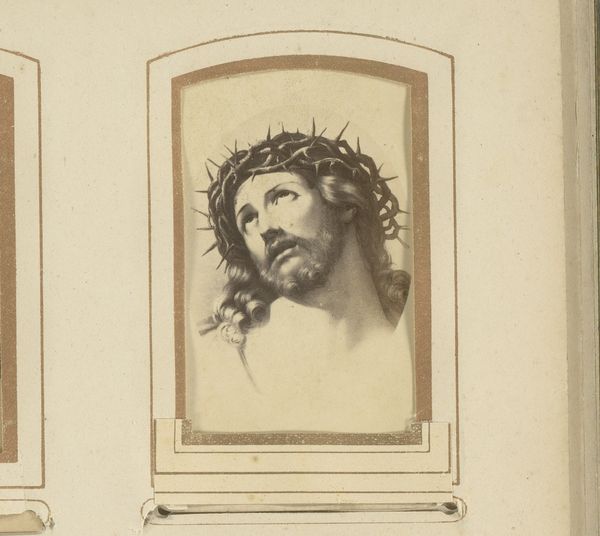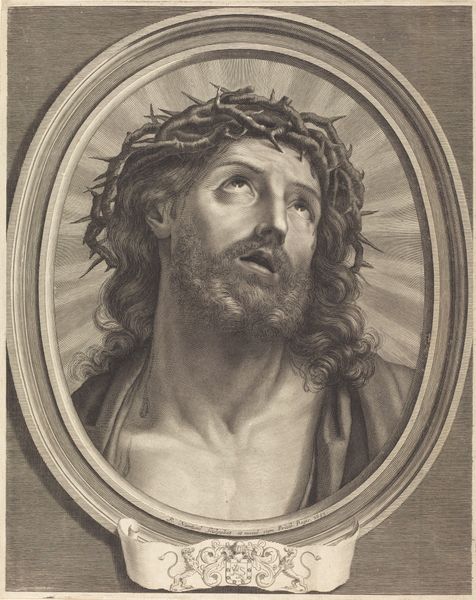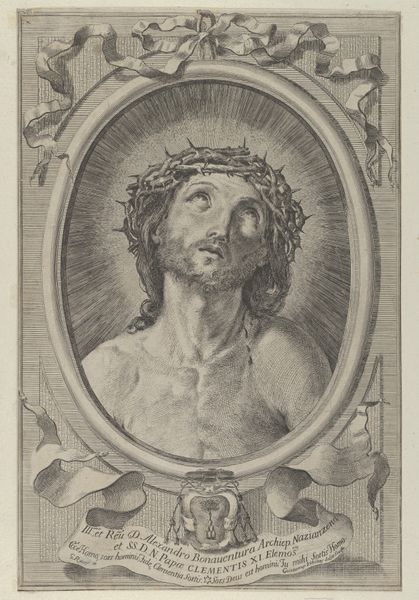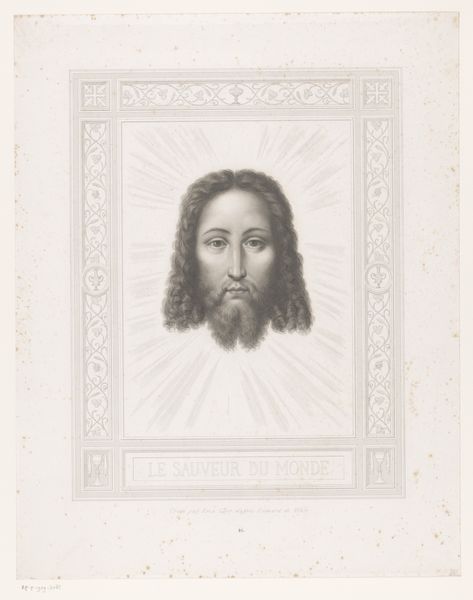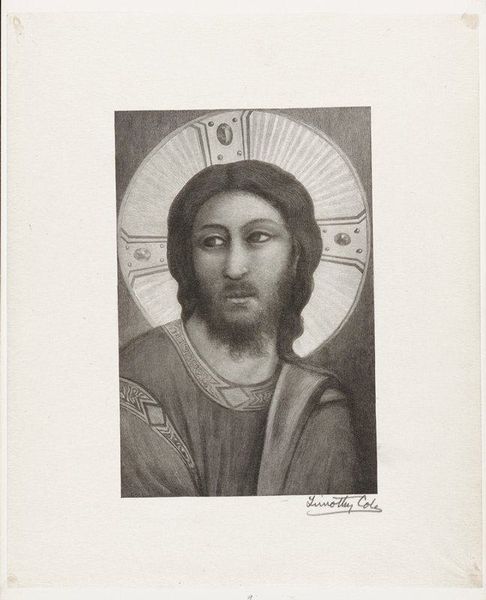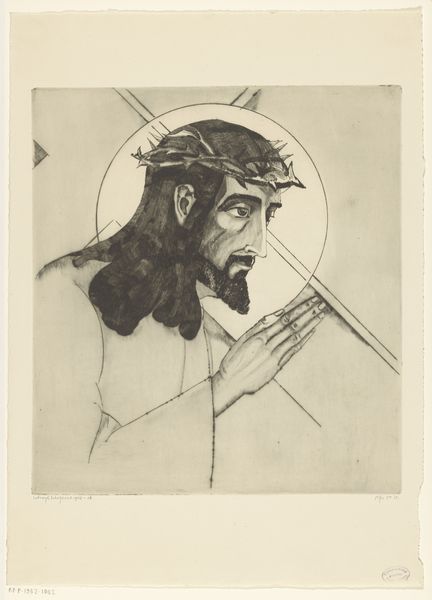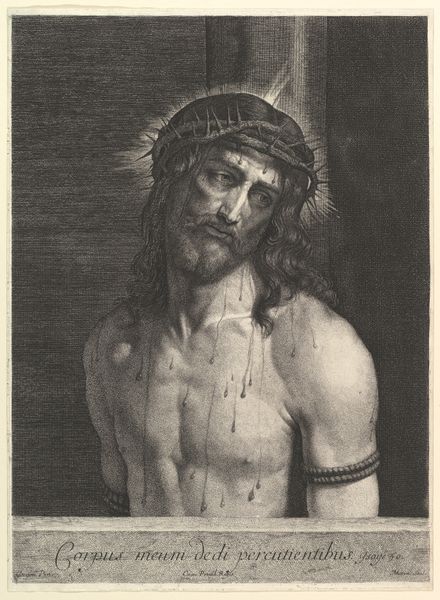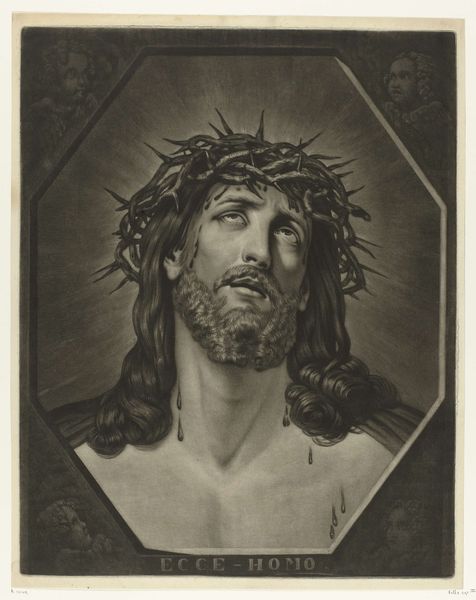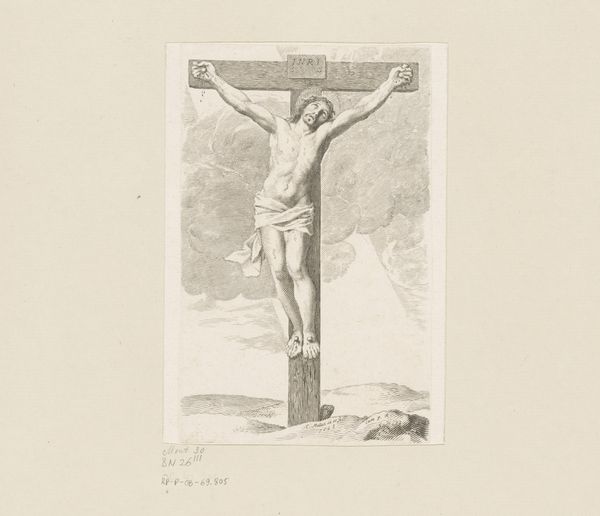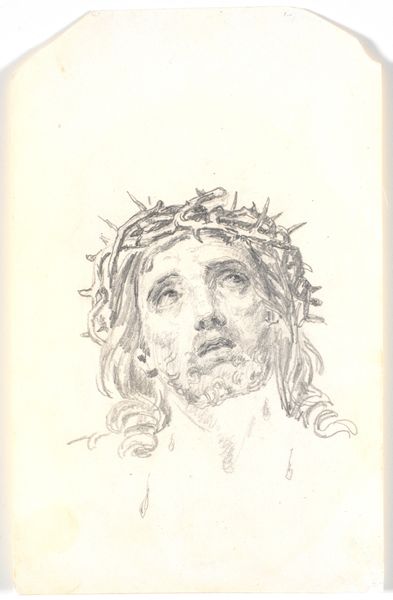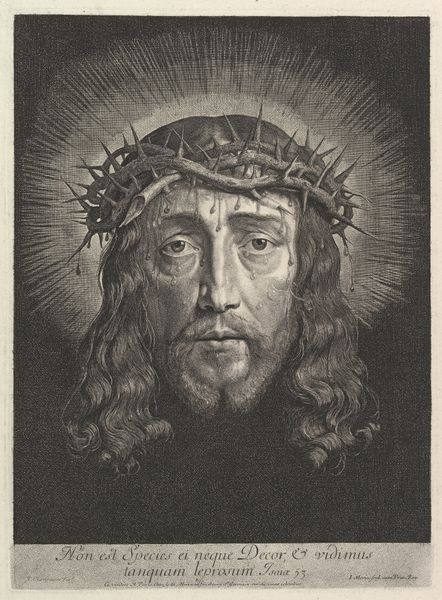
drawing, print, intaglio
#
portrait
#
drawing
#
allegory
#
baroque
# print
#
intaglio
#
figuration
#
history-painting
#
christ
Dimensions: Sheet (Trimmed): 8 11/16 × 6 7/8 in. (22.1 × 17.5 cm)
Copyright: Public Domain
Galgano Cipriani created this print, Ecce Homo, sometime in the early 19th century. The image presents us with a familiar trope, the suffering of Christ, but how does it do so, and to what end? The title, "Ecce Homo", which translates as "Behold the Man", is taken from the Bible, and is said by Pontius Pilate as he presents Christ to a hostile crowd. Italy in the early 1800s saw the Papal States clinging to power amid revolution and Enlightenment ideas about the rights of man. The image of Christ's suffering here becomes an endorsement of the Church and its traditional authority. To understand this print, it is helpful to look into the history of the Church in the early 19th century and also to investigate the careers of printmakers like Cipriani, who made their living by reproducing conventional religious imagery. Religious iconography is always political, and historians can help reveal its specific cultural function.
Comments
No comments
Be the first to comment and join the conversation on the ultimate creative platform.

